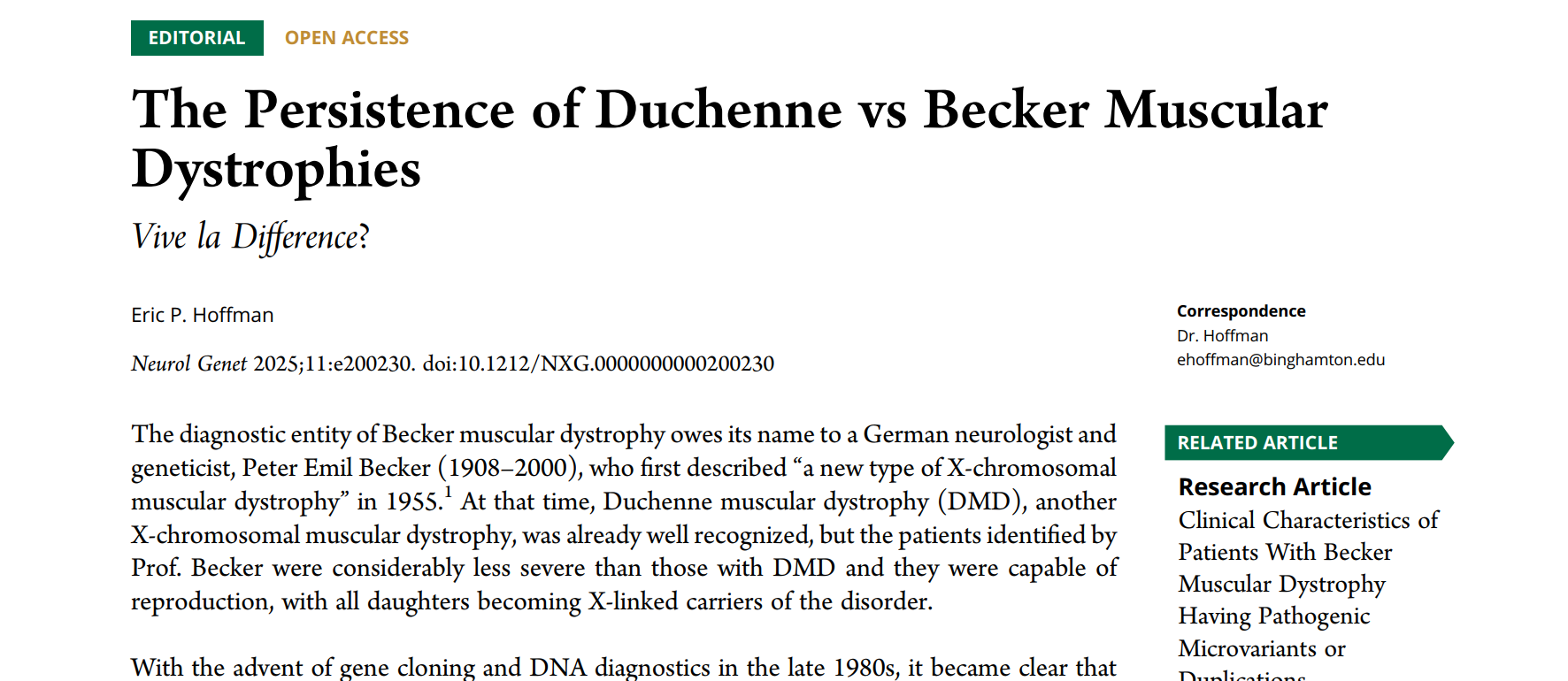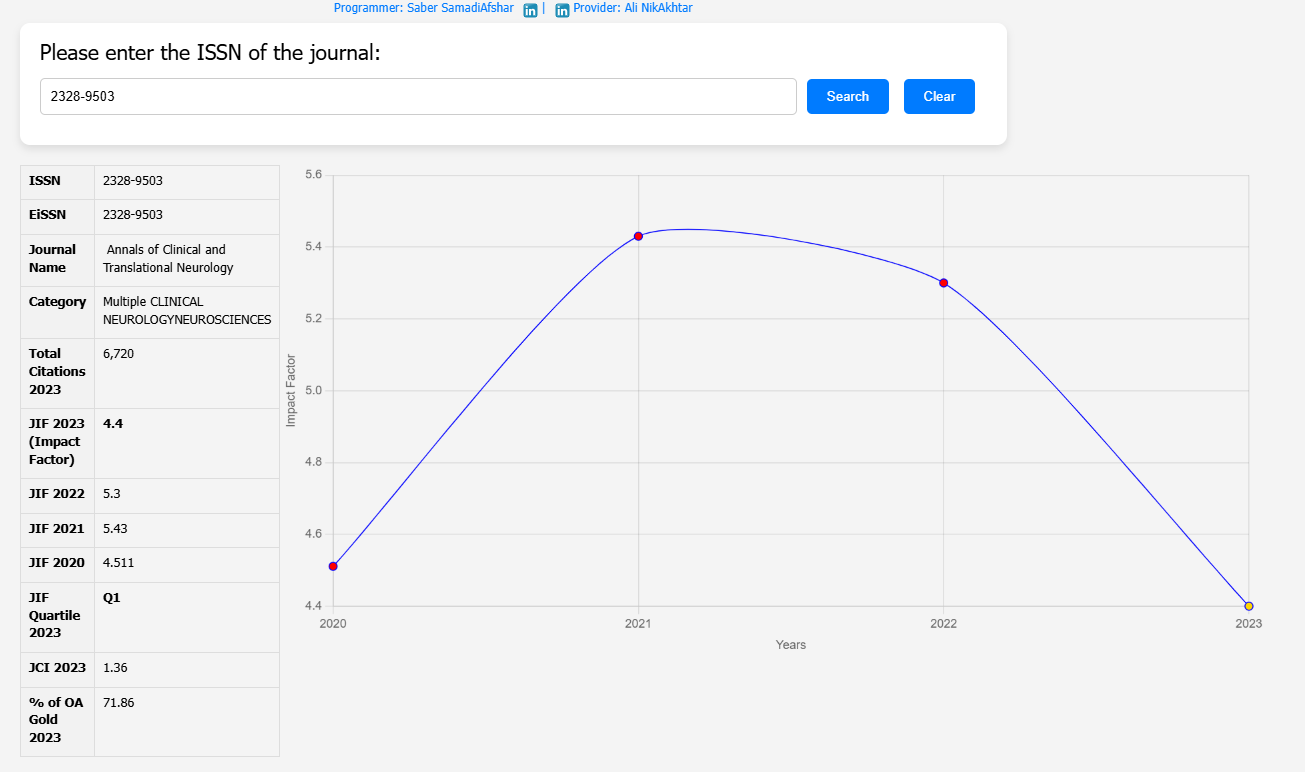Duchenne and Becker Muscular Dystrophy: Rethinking the Divide
Summary
Introduction
In a thought-provoking editorial, Dr. Eric P. Hoffman explores why Duchenne muscular dystrophy (DMD) and Becker muscular dystrophy (BMD) continue to be classified as separate diagnostic entities despite sharing mutations in the same gene, DMD. Published in Neurology: Genetics (February 2025), this editorial provides historical context, evaluates recent studies, and discusses future directions in the field of dystrophinopathies.
Historical Context
Peter Emil Becker first described Becker muscular dystrophy in 1955, noting that it was an X-linked muscular dystrophy with a milder presentation compared to Duchenne muscular dystrophy, which was already well recognized. The major distinguishing feature was that BMD patients were often capable of reproduction. Gene cloning and DNA diagnostics in the 1980s revealed that both DMD and BMD stem from pathogenic variants in the same DMD gene.
Persistence of Separate Diagnoses
Despite the shared genetic origin, Duchenne and Becker muscular dystrophies have remained separate in diagnostic classifications like the WHO ICD-11 (2024). Becker muscular dystrophy (8C70.0) and Duchenne muscular dystrophy (8C70.1) are listed sequentially but independently, without cross-reference.
New Insights from Nakamura et al.
The editorial highlights a new study by Nakamura et al., focusing on BMD patients with nondeletion variants, including microvariants (missense, nonsense, splice site mutations) and duplications. The study drew from a large Japanese registry and included 49 patients: 16 with duplications and 33 with microvariants.
Challenges in Diagnosis
Nakamura et al.'s study showcases the difficulty of strictly categorizing DMD and BMD based on genetic variants alone. For example, patient 29 had a splice site variant and was diagnosed with BMD based on muscle biopsy results, while their sibling with the same mutation had a much more severe clinical course, resembling DMD.
Nonsense Mutations
Traditionally, nonsense mutations are associated with severe DMD. However, the authors included nonsense variants in their BMD cohort, citing cases where some nonsense mutations may be "skipped" naturally, producing a milder phenotype. Still, most nonsense mutations lead to little or no dystrophin production. A French study cited in the editorial showed that most patients with nonsense variants had almost no dystrophin expression.
Genotype-Phenotype Correlations
The position of the mutation within the DMD gene is an important predictor of clinical severity. Mutations closer to the 3' end of the gene tend to produce more severe phenotypes because they affect multiple dystrophin isoforms (Dp427, Dp140, Dp71), whereas mutations at the beginning mainly affect only the full-length Dp427.
Clinical and Research Implications
The editorial questions whether therapies for BMD should be based on specific genetic subtypes, given the extensive variability. Dr. Hoffman suggests that rather than subdividing dystrophinopathies into strict categories like DMD and BMD, it may be more realistic to view them as a clinical continuum.
Proposal for Terminology
Dr. Hoffman advocates for using the term "dystrophinopathies" to encompass the wide spectrum of severity, which would be more inclusive of symptomatic female carriers and better reflect clinical realities. He suggests that "Becker muscular dystrophy" may be increasingly difficult to defend as a distinct category.
Conclusion
This editorial stresses the complexity of dystrophinopathies and underscores the need for a nuanced approach to classification and treatment. It highlights the importance of genotype-phenotype studies like that of Nakamura et al., which improve understanding but also reveal the limitations of rigid diagnostic boundaries.


| Field | Details |
|---|---|
| Title | The Persistence of Duchenne vs Becker Muscular Dystrophies: Vive la Difference? |
| Author | Eric P. Hoffman |
| Corresponding Author | Eric P. Hoffman (ehoffman@binghamton.edu) |
| Publication Date | February 2025 |
| Journal | Neurology® Genetics |
| Keywords | Duchenne Muscular Dystrophy, Becker Muscular Dystrophy, Dystrophinopathy, DMD gene, genetic variants |
| Methods Used | Historical review, genotype-phenotype correlation analysis, discussion of diagnostic criteria and classification evolution |
| Study Type | Editorial article / Expert commentary |
| DOI | 10.1212/NXG.0000000000200230 |















